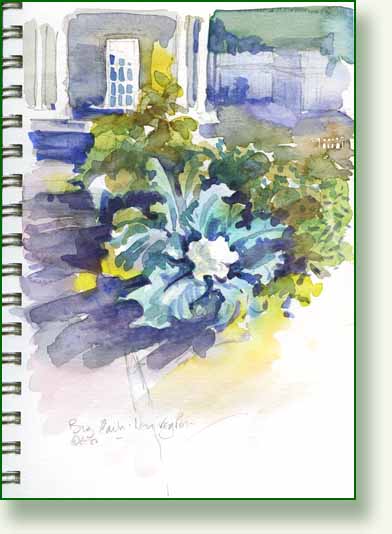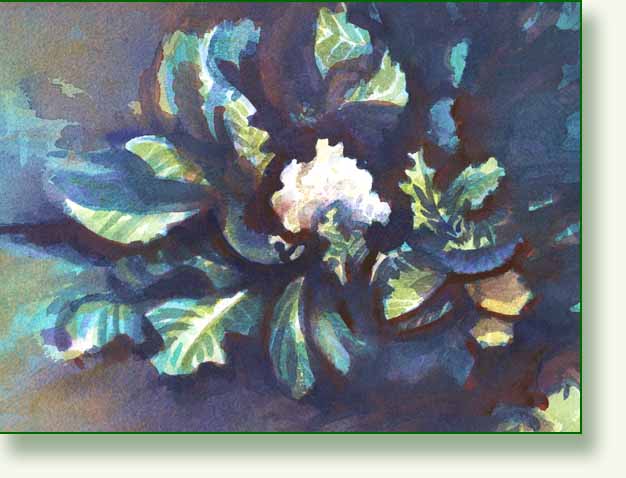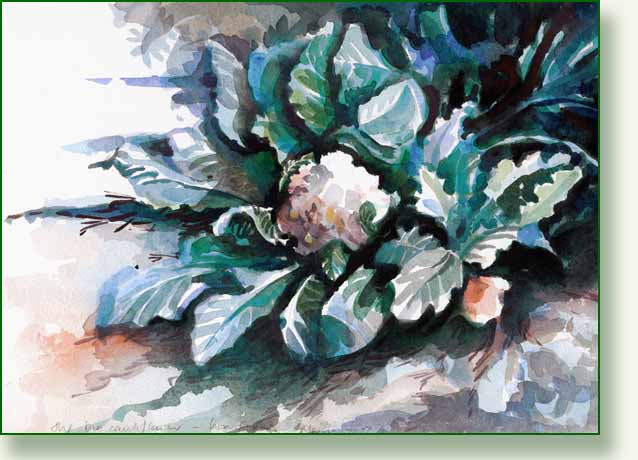It may have just been a cauliflower but what a beautiful big cauliflower it was, growing in the Vegetable Plot at Leu Gardens. It was enormous and would have fed a family of ten with a hearty cauliflower cheese. Mark Twain apparently said that the cauliflower was “cabbage with a college education”.
I had sketched it a couple of weeks ago, meaning to ask for a leaf to make a study of, but when I returned it was gone. Carpe diem I did not..will I never learn?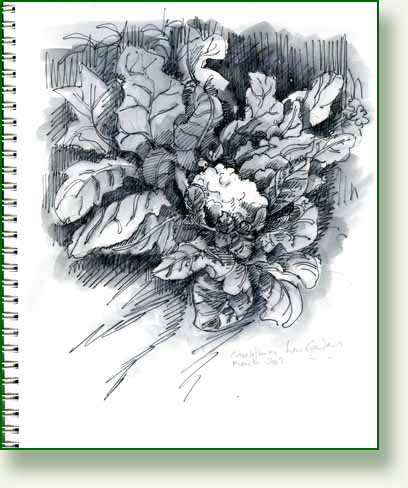
I really like cauliflower..But I have never tried to grow one. I love to see the pristine white florets tightly wrapped in their protective blue green leaves. What a very handsome vegetable they are. Bartolomeo Bimbi, favourite botanical painter to the Medici’s thought so too.
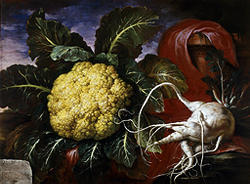
Monstrous Cauliflower and Horseradish, 1706 , oil on canvas
Bartolomeo Bimbi (1648-1729)
Bimbi, a Florentine artist with little formal training, painted still lifes of remarkable scientific accuracy. He specialized in “portraits from nature,” that is, the portrayal not of persons but of flowers, plants, and animals. His canvases decorated the walls of many aristocratic villas. These large-scale scenes of monstrous and odd specimens of flowers, vegetables, and fruits, which were grown in gardens amid fierce competition for the largest or most unusual hybrid, are complete with inscriptions listing the name of each specimen and when and where it was gathered. Notwithstanding this scientific approach, Bimbi’s subjects are arranged in picturesque compositions against landscape backgrounds, piled high on costly carpets and drapery, or placed among antique statuary. His patron, Cosimo III (1642-1723), was a gloomy and eccentric ruler, but he had a decided interest in botany, perhaps spurred by his rigid vegetarian diet, and the arts flourished under his reign. Also fond of exotic animals, he constructed a large menagerie in the Boboli garden behind Palazzo Pitti in Florence.
From the 2002 exhibition catalogue, “The Flowering of Florence : Botanical Art for the Medici”. National Gallery of Art, Washington here
It’s good to learn that the competitive veg growing spirit was alive and well, even in those days. They would, I imagine, have been envious of these.
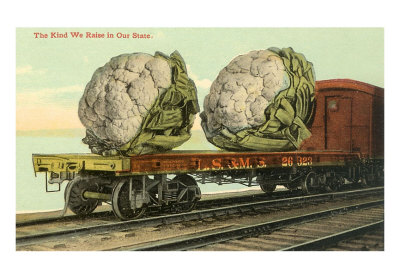
from All Posters here.. I am not sure which State though…
The cauliflower was bred from one of the broccolis, one which was grown for its heads of flowers rather than its leaves. Gradually the “flowers” became bigger and whiter. Originally known as Cole Florie (cabbage flower) it was introduced into England at the same time as broccoli by the Italians and the French, and by the 1600s was widely available. It was also known as Cyprus Coleworts from where it also seems to have made its way to Britain.
Gerard mentioned it in his Herbal in 1597
“Cole flore, or after some Colieflore, hath many large leaves sleightly indented about the edges, of a whiteish greene colour, narrower and sharper pointed than Cabbage; in the middlest of which riseth up a great white head of hard floures closely thrust together, with a root full of stringes, in other parts like to the coleworts.”
From the completely fascinating “Glossary of Medieval and Renaissance Culinary Terms” here complied by thousandeggs.com .. go there to spend many happy hours browsing.
And for those who want to brush up on their maths, the growth pattern of the florets (curds) of a cauliflower, as with many other natural forms, illustrates the elegant Fibonacci numbers, and its fractal dimension is predicted at about 2.88… 🙂
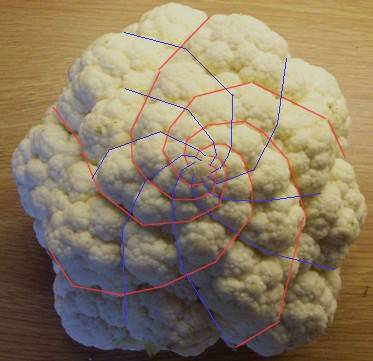
Go here to the aptly named Dr Ron Knott’s excellent Fibonacci and Golden Section in Nature pages with lots of info and things to do ..
Today I made a couple of very unmathematical studies from my sketches and a photograph, but this beautiful cauliflower really deserves a much more careful painting but when I have more time.
________________________________________________
Watercolour on Kilimanjaro, size 8 “x 10”

